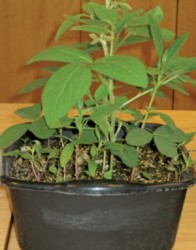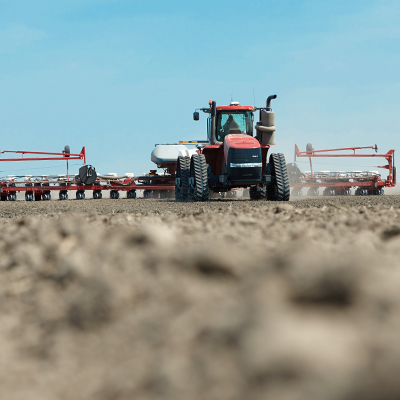The Promise And The Peril

These are exciting times for the agriculture marketplace. Grower and ag retail income is up, commodity prices have stayed relatively strong, and manufacturers are looking to expand their offerings. Despite these positive developments, however, there are still a few issues that could threaten the industry’s continued prosperity.
This was the message delivered to attendees of the 2008 Syngenta Media Summit, held Oct. 1-3 by Syngenta Crop Protection in Orlando, FL. In general, things have never been better for the agriculture marketplace. According to Valdemar Fischer, president/regional head of NAFTA crop protection for the company, the agribusiness industry was valued at $60 billion in 2007, and is on pace to stay in this range once the final numbers for 2008 are tallied. In particular, sales of fungicides have been extremely positive, recording a 29% revenue increase vs. 2007.
“Growers all over the world are demanding fungicides to increase their yields,” said Fischer.
Travis Dickinson, head of marketing, agreed with this assessment. Furthermore, he pointed out the positives and negatives that impacted the industry this year. “On the good side, there was sustained customer profitability, an increased focus on yield, and no Farm Bill hiccups,” said Dickinson.
On the “bad” side for agriculture, there was significant flooding in the nation’s Heartland, drought conditions in the West and Southeast, and an escalation of input costs. “For 2009, there is probably more volatility to come,” he added. “In particular, getting capital to run the business could have a big impact on market conditions.”
Seed Money
In the seed arena, Syngenta is experiencing similar market conditions and growth. According to Bruce Howison, vice president, marketing, 2008 was a “dynamic year” for seed revenues, with a strong demand by customers for new genetics and traits to help boost yields. Particularly popular was the company’s NK Soybeans. “Based upon our data, one in two soybean fields in the U.S. today grows NK Soybeans,” said Howison.
Going forward, Syngenta will focus much of its seed attention in 2009 on corn. First up from the company will be Agrisure 3000GT. According to Tracy Mader, Agrisure traits brand manager for Syngenta Seeds, Agrisure 3000GT is a triple-stacked product offering herbicide tolerance to glyphosate and glufosinate as well as insect protection to corn borer and corn rootworm.
In addition, Syngenta is testing a new insect control corn trait called MIR162. “This product offers superior control of a broad spectrum of above-ground corn insect pests,” said Mader. “This will make it effective against such pests as corn earworm, fall armyworm, and common stalk borer.”
If all the testing goes according to plan, she added, MIR162 should have its commercial introduction during the 2010 planting season.
Managing Weeds
One key challenge for all of agriculture to address, said numerous speakers, was the growing number of herbicide-resistant weeds. According to Chuck Foresman, manager of weed resistance strategies for Syngenta, there were only two known resistant weed types in 2003. Today, there are nine. Of these, 40% are marestail and 20% are waterhemp varieties.
In many cases, added Foresman, growers and applicators have made the situation worse through their application methods. “Many users have not sprayed these weeds at full rates to try to save some money, but that’s making things worse,” he said. “We will ruin our chemical options out there if we don’t use full rates. Anything less will cause many more mutations that are resistant to thrive.”
Kevin Bradley, assistant professor and Extension weed scientist for the University of Missouri, agreed with Foresman’s market analysis. He added the time was rapidly approaching when agriculture will be forced to face this challenge.
“Glyphosate has allowed growers to farm more acres with less equipment and less labor, but widespread glyphosate-resistant weeds will change how we do business,” said Bradley. “With more and more resistant weeds, we will move from a system that is simple to one that is more complex, which growers don’t seem to want anymore. There will be reluctance to do this, but it is inevitable.”
To combat this problem, Syngenta is planning to release a pair of herbicides in the next few years, one preemergence and one postemergence. The preemergence brand, called Prefix, features a formulation of s-metolachlor and fomesafen to offer grass and broadleaf control in soybeans.
“Prefix provides five weeks of residual control,” said Scott Langkamp, head, herbicide brand management. “This product will see a limited launch in 2009.”
On the postemergence side, Syngenta is preparing an as-yet unnamed herbicide which blends fomesafen and glyphosate.
“This product is designed specifically for use on soybean acres with weeds that have developed or are likely to develop resistance to glyphosate and/or ALS inhibitors,” said Langkamp.
The Big Picture
Looking at a more 30,000-foot view of the upcoming years, Carroll Moseley, mesotrione brand manager for Syngenta, said that projections show U.S. corn exports declining 2 billion bushels in 2009, with feed use dropping by 850 million bushels. “These declines should be overcome by the demand for corn used for ethanol production,” said Moseley. “Total corn use is forecast at 12.65 billion bushels, which is much higher than production. This shortage will challenge U.S. corn producers to maximize their yield potential on every acre.”
Besides these issues, agriculture will have to deal with a host of higher costs across the boards. According to Moseley, fertilizer costs are projected to be $215 per acre, up almost $100 from 2008, non-land production costs will increase to $530 per acre, and glyphosate, fuel, crop insurance, and power costs will remain high.
“These higher production costs will have a significant impact on the breakeven prices for corn crops,” he said. “These are projected to be at $3.82 per bushel, up from approximately $2.40 per bushel this year.”






